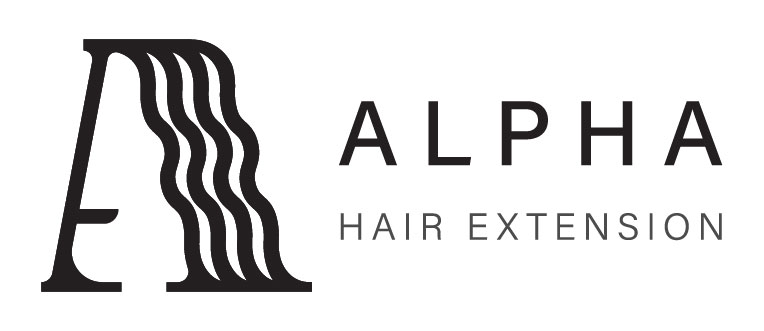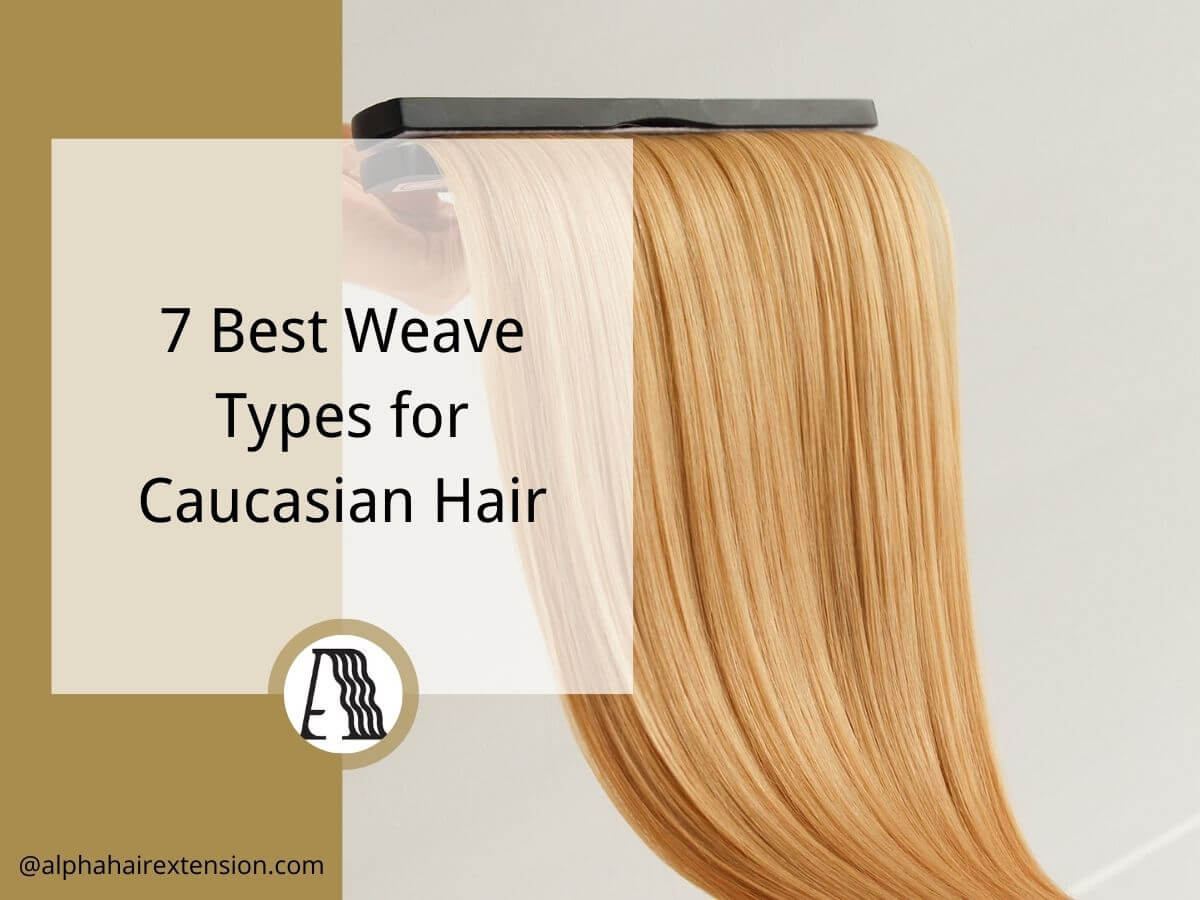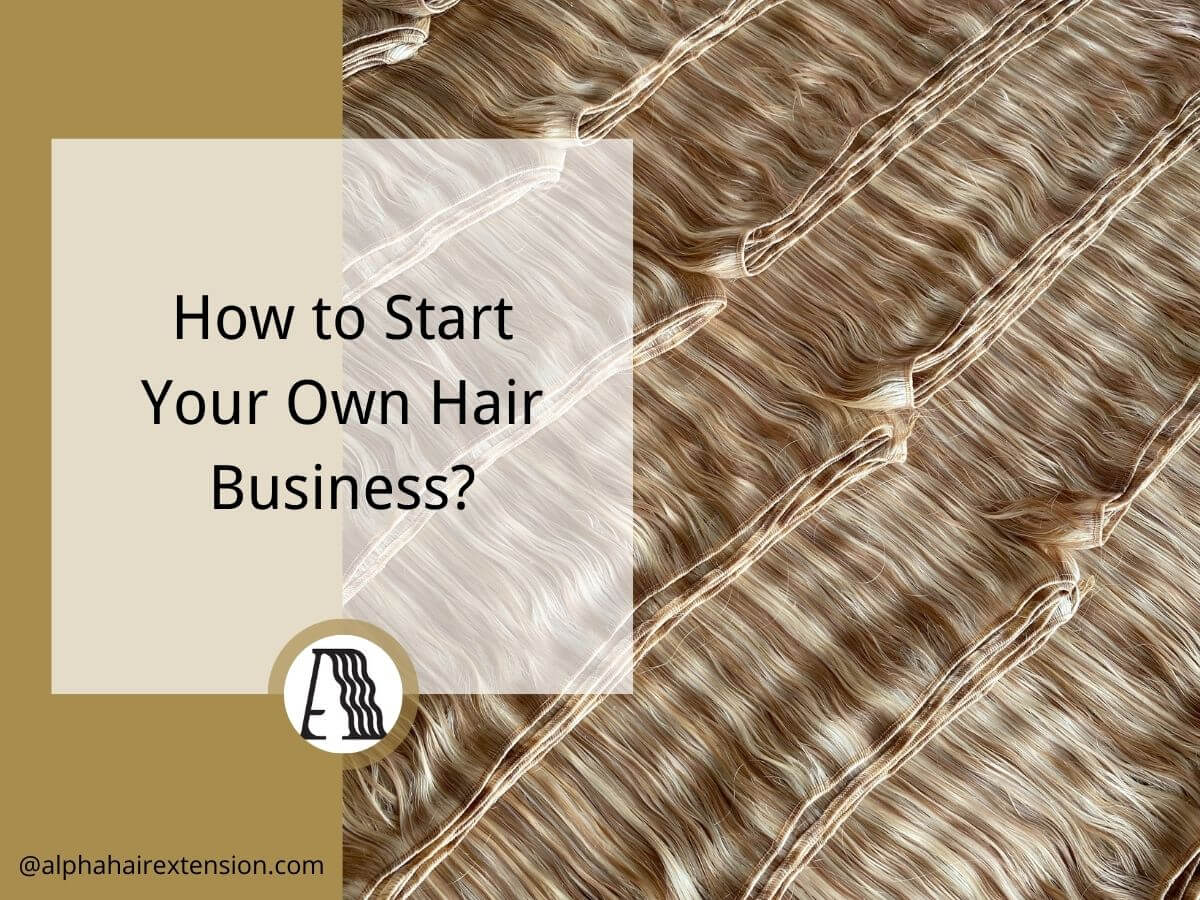I once spent months testing different hair extension methods for my business, only to realize that not all extensions perform the same way. Some looked flawless at first but caused major headaches later.
If you’re considering I-tip or tape-in extensions, making the right choice can save you time, money, and customer complaints.
We’ve worked with countless manufacturers, tested products in real salons, and know what makes or breaks an extension method. This review is based on real-world experience, not just surface-level research.
In this guide, we’ll break down the key differences between I-tip and tape-in extensions—durability, application time, cost, and client satisfaction—so you can confidently choose the best option.
So, let’s dive in!
1. What is an I-Tip Hair Extension?
I-tip extensions have been a popular choice for businesses offering premium hair extension services. They provide a seamless and natural look that many clients love. But before you decide if they’re the right fit for your salon, it’s essential to understand how they work, their benefits, and their potential drawbacks.
How I-Tip Extensions Work
If you’ve ever worked with I-tip extensions, you know they can be both a game-changer and a challenge. I remember the first time I introduced them to my business—I thought they’d be the perfect solution for clients looking for longer wear without adhesives. And they are, but there’s more to the story.
I-tip hair extensions are individual strands attached using tiny, bead-like cylinders. These beads secure the extensions to the natural hair without the need for heat or glue. Stylists use a small tool to clamp the bead, locking the extension in place. Unlike some other extension types, I-tips do not require adhesive, making them a great option for those concerned about chemical exposure or residue buildup.
Pros and Cons of I-Tip Extensions
Pros:
- Long-lasting wear (3-6 months with proper maintenance)
- No heat or glue required, reducing hair damage
- Provides more styling flexibility, including high ponytails and braids
- Ideal for clients with fine or thinning hair
- Reusable, making them a cost-effective option in the long run
Cons:
- Longer application time (2-4 hours for a full set)
- Requires maintenance every 6-8 weeks
- Can slip if not properly maintained
- Higher initial cost for clients
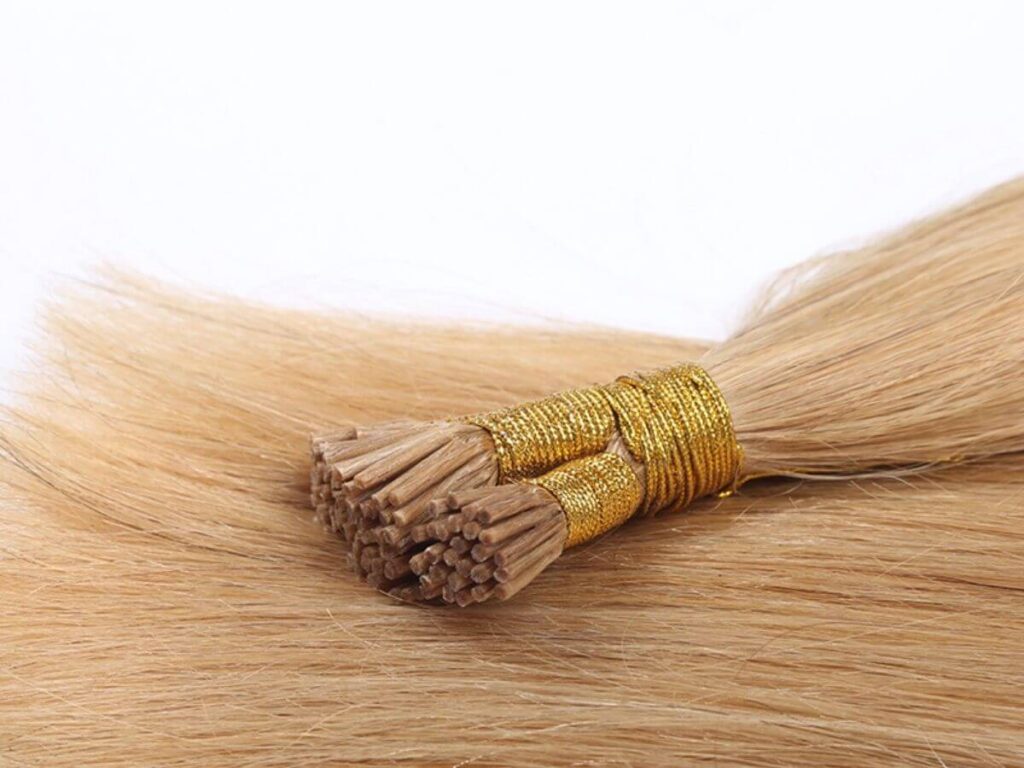
2. What is a Tape-In Hair Extension?
Tape-in extensions have revolutionized the hair extension industry by offering a quick and efficient way to add volume and length. They are an excellent option for businesses looking to provide high-quality extensions with minimal installation time.
How Tape-In Extensions Work
Tape-in extensions are a whole different experience. When I first started offering them, I quickly realized they were a salon favorite for one big reason—speed. Unlike I-tips, tape-ins use thin, pre-taped wefts that adhere to sections of the natural hair. No beads, no heat, just a simple sandwich-like application that takes a fraction of the time.
Tape-in extensions are applied by placing a thin strip of a client’s natural hair between two adhesive-backed wefts. The pressure from the adhesive secures the extension, making it lie flat against the scalp. This method creates a seamless and natural appearance, making tape-ins one of the most discreet extension options available.
Pros and Cons of Tape-In Extensions
Pros:
- Quick and easy installation (30 minutes to 1 hour)
- Less expensive compared to I-tips
- Low maintenance for daily styling
- Reusable with proper care
- Comfortable and lightweight
Cons:
- Requires full removal and reapplication every 6-8 weeks
- Adhesive can weaken with oil-based hair products
- Less styling flexibility compared to I-tips
- Can cause breakage if not properly removed
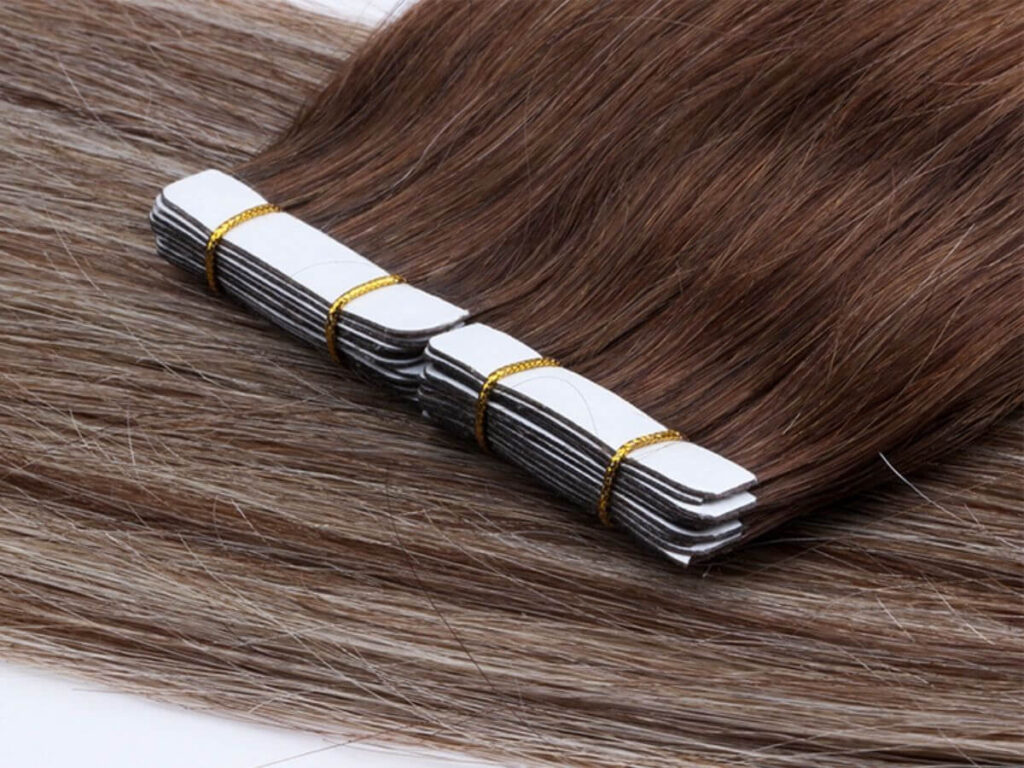
3. Differences Between I-Tip and Tape-In Extensions
Choosing the right extension type can significantly impact your business, client satisfaction, and long-term profitability. To make an informed decision, it’s crucial to understand how I-tip and tape-in extensions compare in key areas. The table below provides a detailed side-by-side comparison to help you evaluate their differences.
| Feature | I-Tip Extensions | Tape-In Extensions |
| Installation Process | Individual strands attached with beads, takes 2-4 hours | Pre-taped wefts applied in a sandwich method, takes 30 minutes – 1 hour |
| Longevity & Maintenance | Lasts 3-6 months with proper upkeep, requires bead adjustments every 6-8 weeks | Lasts 6-8 weeks, requires full removal and reapplication |
| Hair Health & Damage Risk | No glue or heat required, low damage risk if properly installed and maintained | Adhesive can cause residue buildup, improper removal may lead to breakage |
| Styling Flexibility | More versatile, allows for high ponytails and braids | Lays flat for a seamless look, but high ponytails can be restrictive |
| Cost & Profitability | Higher initial cost, but reusable and long-lasting | Lower initial cost, requires frequent maintenance and replacement |
4. 4 Factors to Consider When Choosing Between Hair Extensions
Choosing the right hair extension method goes beyond just cost and installation time. Your decision should be based on multiple factors, including your business goals, client preferences, and the long-term impact on both your customers and your profitability. Below are four critical considerations to help you make an informed choice.
#1 Client Lifestyle and Hair Type
Some clients are constantly on the go, while others prefer a low-maintenance approach to hair care. If your clients are highly active, frequently style their hair, or need something long-lasting, I-tips might be the better option. They provide maximum flexibility without the risk of adhesive slipping.
On the other hand, if your clients prefer a semi-permanent option that requires minimal effort on their part, tape-ins are ideal. They offer a quick and easy way to achieve volume and length without a major time commitment.
#2 Stylist Skill Level
Not all extensions are created equal, and not all stylists are trained to install every type. I-tip application requires more advanced training and experience. If your team isn’t experienced, you may need additional education before offering them. This can be an investment, but it may be worth it for clients who prefer strand-by-strand extensions.
Tape-ins, on the other hand, are easier to apply and remove, making them a great option for stylists who are new to extensions. If you’re looking to expand your service offerings quickly, tape-ins may be the best way to start.
#3 Profitability and Time Efficiency
Time is money in the salon business, and the type of extensions you offer can impact your bottom line. If your business model prioritizes high-end services and long-term clients, I-tips could be a great investment. While they take longer to install, they last much longer, meaning you’ll attract clients who are willing to invest in premium services.
On the other hand, if you want to maximize the number of clients served per day, tape-ins allow for a faster turnaround. You can book more clients in a single day, leading to increased revenue in less time.
#4 Maintenance Commitment for Clients
Not all clients are willing to keep up with maintenance appointments. Some prefer a long-lasting option even if it means coming in for periodic adjustments (I-tips). Others may prefer something lower maintenance that requires full reapplication every few months (tape-ins). Understanding your clients’ needs and preferences will help you choose the best method to offer in your business.
Conclusion
Over the years, I’ve learned that choosing the right hair extensions isn’t just about trends—it’s about what truly works for your business and your clients.
It’s a learning process, but one that pays off when done right.
No matter which method you choose, partnering with a trusted supplier makes all the difference. That’s why Alpha Hair Extension is committed to providing premium-quality hair products that help businesses succeed.
Contact us today and let’s find the perfect solution for your brand!
Explore Related Resources
Want to see more? We’ve gathered additional product choices to give you even more variety:
Still haven’t found what you’re looking for? Don’t hesitate to contact us. We’re available around the clock to assist you.
